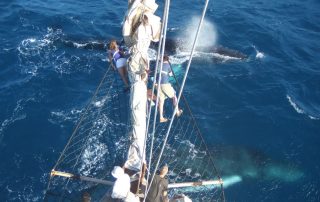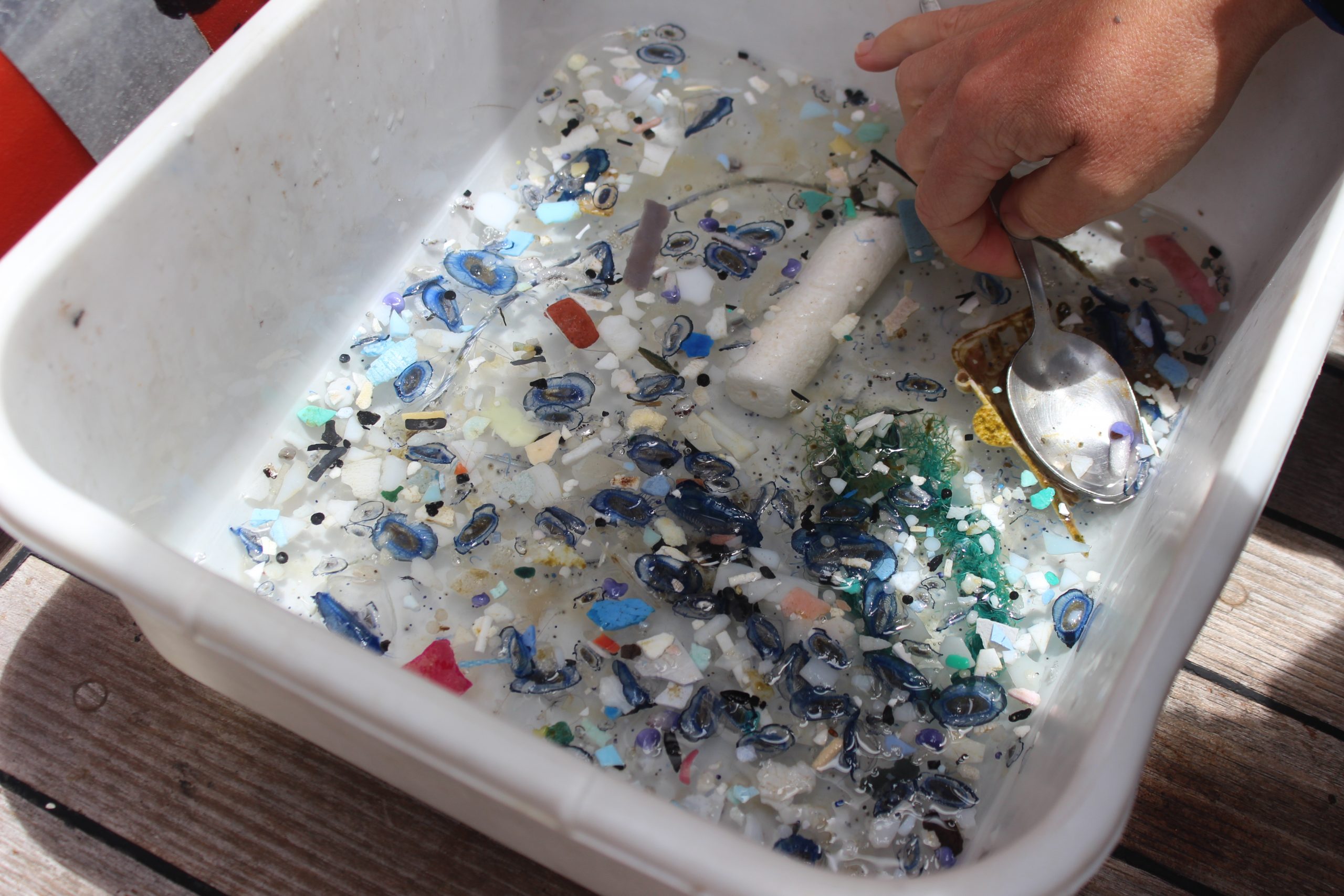Marine Biodiversity
Research @ SEA
Marine Biodiversity
Biodiversity within species (genetic diversity) and between species is critical for maintaining the health, productivity and resilience of an ecosystem. Marine biodiversity, in particular, has the potential to transform medicine, industry, environmental remediation and energy production. However, marine biodiversity is simultaneously under-sampled and threatened by pollution, habitat destruction, fishing and climate change. SEA’s repeated cruise tracks across remote areas of the ocean offer an excellent opportunity to advance our understanding of global marine ecosystems, while SEA students’ concentrated research efforts in the Sargasso Sea generate detailed data to inform management of high seas biodiversity.
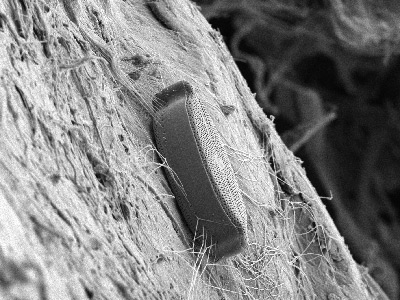
Microbial communities
Microbes including bacteria, Archaea, and eukaryotic protists are understudied despite their important role in regulating Earth’s climate and driving ocean productivity. Marine microbes are enormously diverse, and exhibit specialized functions in the ocean over geographic space, depth and time. Moreover, floating substrates and the surfaces of higher organisms may support different microbial communities from the surrounding water and serve as vectors for transport. Modern molecular methods, including whole-community fingerprinting, allow SEA Semester students to examine the diversity and connectivity of these small but mighty marine microbes.
SEA faculty and collaborators: Kerry Whittaker (SEA)
Sargassum
The Sargasso Sea hosts abundant Sargassum, the only seaweed that spends its entire life adrift on the ocean’s surface; several unique species and morphological variants are found in this region. SEA has been at the forefront of identifying and describing the taxonomic differences between these Sargassum types using extensive field samples as well as morphological and genetic tools. This research is particularly relevant given the rise of a previously-rare form of Sargassum inundating Caribbean beaches and wreaking havoc on local ecosystems and economies. Understanding the taxonomy and molecular diversity of these seaweed variants will shed light on the shifting patterns of Sargassum distribution and abundance throughout the region.
SEA faculty and collaborators: Jeff Schell (SEA), Deb Goodwin (SEA), Kerry Whittaker (SEA), Amy Siuda (Eckerd College)
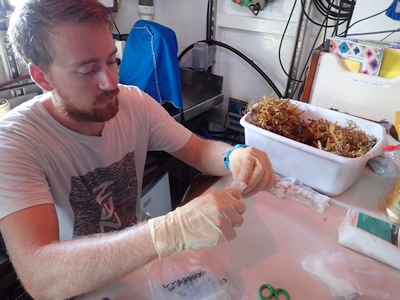
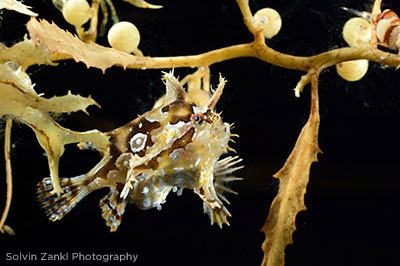
The Sargassum community
Patches of Sargassum represent productivity and biodiversity ‘hotspots’ in a nutrient- and substrate-limited open ocean environment. Floating Sargassum harbors a diverse rafting assemblage of associated sessile and mobile organisms, including many species found nowhere else in the world. Using field sampling plus morphological and molecular identification techniques, SEA Semester students and faculty scientists examine the diversity and connectivity of Sargassum-associated species and communities including endemic hydroids (coral relatives), shrimp, crabs, and fish.
SEA faculty and collaborators: Jeff Schell (SEA), Deb Goodwin (SEA), Kerry Whittaker (SEA), Amy Siuda (Eckerd College), Annette Govindarajan (WHOI)
Eel larvae (Leptocephali)
The Sargasso Sea provides spawning and nursery habitat for a number of marine and freshwater eel species of high ecological and economic value. Eel larvae are collected in surface and subsurface plankton net tows to study vertical and geographic patterns of species distribution. Genetic tools are used to elucidate eel population structure and connectivity.
SEA faculty and collaborators: Kerry Whittaker (SEA), Amy Siuda (Eckerd College)
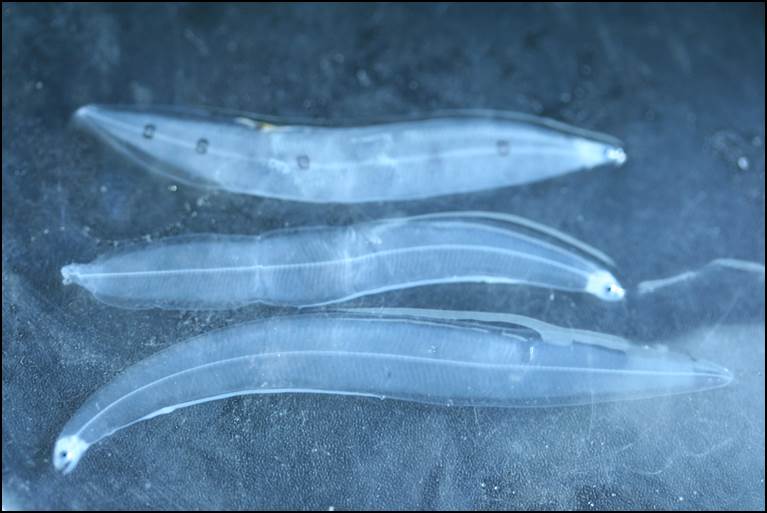
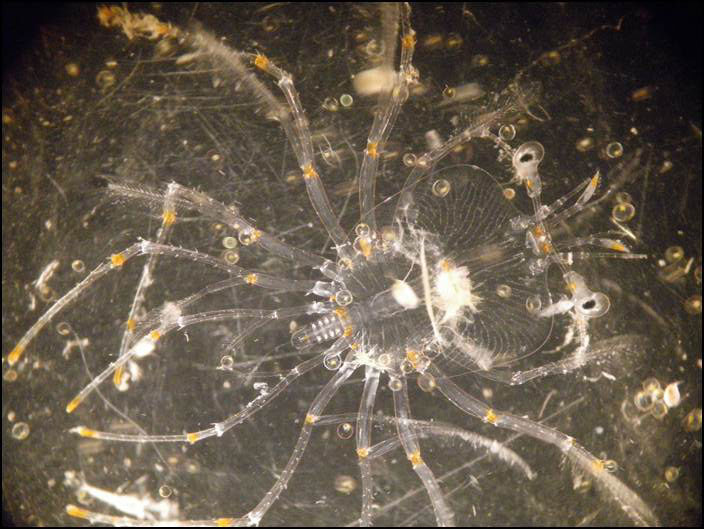
Spiny lobster larvae (Phyllosoma)
Caribbean spiny lobster, Panulirus argus, are a commercially important species throughout the Caribbean and coastal southeastern United States whose stocks have declined during the last decade. In past SEA Semesters, student research focused on the planktonic juveniles using morphological characteristics to determine larval stage/age, and molecular methods to distinguish between source populations in order to understand transport and recruitment.
Papers and Publications
Amaral-Zettler, L., N. Dragone^, J. Schell*, B. Slikas, L. Murphy, C. Morrall and E. Zettler*, 2017. Comparative mitochondrial and chloroplast genomics of a genetically distinct form of Sargassum contributing to recent ‘Golden Tides’ in the Western Atlantic. Ecol. Evol. 7, 516-525. doi: 10.1002/ece3.2630
Schmidt, V. , J. Reveillaud, E. Zettler*, T. Mincer, L. Murphy and L. Amaral-Zettler, 2014. Oligotyping reveals community level habitat selection within the genus Vibrio. Front. Microbiol. 5, 563. doi: 10.3389/fmicb.2014.00563
Sehein, T.^, A. Siuda*, T. Shank and A. Govindarajan, 2014. Connectivity in the slender Sargassum shrimp (Latreutes fucorum): implications for a Sargasso Sea protected area. J. Plankton Res. 36, 1408-1412. doi: 10.1093/plankt/fbu081
McCliment, E., C. Nelson, C. Carlson, A. Alldredge, J. Witting* and L. Amaral-Zettler, 2012. An all-taxon microbial inventory of the Moorea coral reef ecosystem. ISME Journal 6, 309-319. doi: 10.1038/ismej.2011.108
Brady, E., B. Gagnon, S. Waller and K. Wells, 2018. Examining inter- and intraspecific diversity among Sargassum-associated mobile fauna. Unpublished student research paper, Class C-279, Sea Education Association, Woods Hole, MA.
Carter, C., A. Merkle-Raymond and K. Ouellette, 2018. Genetic assessment of A. latecarinata 16s gene reveals population divergence that may act as a tracer for Sargassum movement. Unpublished student research paper, Class C-279, Sea Education Association, Woods Hole, MA.
Anderson, A., D. Hanelin and J. Renee, 2018. Analysis of Sargassum distribution and phylogenetic diversity in the North Atlantic. Unpublished student research paper, Class C-279, Sea Education Association, Woods Hole, MA.
Gill, G., M. Martinez, G. Nahansen and A. Sanders, 2018. Fingerprinting the microbial community biodiversity of the Sargasso Sea. Unpublished student research paper, Class C-279, Sea Education Association, Woods Hole, MA.
Crane, L., 2018. Dispersion and vertical migration patterns in Caribbean spiny lobster (Panilurus argus). Unpublished student research paper, Class C-277, Sea Education Association, Woods Hole, MA.
Lichak, M., R. Pierce, S. Speroff and V. Van Deusen, 2017. Biodiversity and trophic interactions of Sargassum mobile fauna and population genetics of slender Sargassum shrimp. Unpublished student research paper, Class C-273, Sea Education Association, Woods Hole, MA.
Burdorf, R., S. Cellan, M. Malpani and M. Schultz, 2017. Examining hydroid diversity and ecology in the western North Atlantic. Unpublished student research paper, Class C-273, Sea Education Association, Woods Hole, MA.
Brodmerkel, A., K. Leazer, J. Pedraza and P. Petit, 2017. North Atlantic Sargassum: an assessment of health and molecular phytogenetics. Unpublished student research paper, Class C-273, Sea Education Association, Woods Hole, MA.
Glasenapp, M., A. Leahy, M. Spychala and Y. Wang, 2017. Family biodiversity of leptocephali and genetic analysis of Ariosoma balearicum in the Sargasso Sea. Unpublished student research paper, Class C-273, Sea Education Association, Woods Hole, MA.
Corso, A., I. DuMond, A. Duncan and N. Wilcox, 2016. Biodiversity of Sargassum mobile fauna with a focus on Litiopa melanostoma. Unpublished student research paper, Class C-266, Sea Education Association, Woods Hole, MA.
Bloch, D., S. Canning, K. McKeegan and R. Petersen-Rockney, 2016. Hydroid diversity and Aglaophenia latecarinata population connectivity across Sargassum forms in the North Atlantic. Unpublished student research paper, Class C-266, Sea Education Association, Woods Hole, MA.
Freund, W., T. Hallowell, K. Mermel and E. Walton, 2016. Panulirus argus diversity in the Sargasso Sea: connecting the Caribbean to Bermuda. Unpublished student research paper, Class C-266, Sea Education Association, Woods Hole, MA.
Alley, E., A. Hunter, W. Hutcheson, K. Petersen and K. Running, 2016. Molecular phylogeny of pelagic Sargassum. Unpublished student research paper, Class C-266, Sea Education Association, Woods Hole, MA.
Barhite, K., M. Carr, M. Hein, P. Silva and A. Wallin, 2016. Looking at leptocephali: investigating eel biodiversity and phylogenetic relationships of Ariosoma balearicum in the Sargasso Sea. Unpublished student research paper, Class C-266, Sea Education Association, Woods Hole, MA.
Botta, W., J. Townsend and R. Plantz, 2015. Investigating dispersion dynamics of the Caribbean spiny lobster Panulirus argus phyllosoma. Unpublished student research paper, Class C-259, Sea Education Association, Woods Hole, MA.
Olson, E. and E. Tonkin, 2015. A genetic and morphological analysis of Atlantic Sargassum. Unpublished student research paper, Class C-259, Sea Education Association, Woods Hole, MA.
Alberini, A., L. Goss, C. Graham and H. McMonagle, 2015. Initial microbial colonizers of microplastics in the Sargasso Sea. Unpublished student research paper, Class C-259, Sea Education Association, Woods Hole, MA.
Romero, M., O. Robson, K. Rolf and S. Stratton, 2015. Eel biodiversity and population connectivity in the Sargasso Sea. Unpublished student research paper, Class C-259, Sea Education Association, Woods Hole, MA.
Dixon, C., C. Pauly and M. Tan, 2014. The effects of substrate on microbial community composition and biofilm quantity in the Sargasso Sea. Unpublished student research paper, Class C-252, Sea Education Association, Woods Hole, MA.
Whittaker, K.*, A. Siuda*, J. Schell* and D. Goodwin*, 2018. Molecular divergence of holopelagic Sargassum species using extensive field samples from the tropical and subtropical Atlantic. 71st Annual Gulf and Caribbean Fisheries Institute Conference, San Andres, Colombia.
Siuda, A.^, D. Goodwin*, J. Schell*, E. Alley^, D. Bloch^, S. Canning^, W. Hutcheson^, A. Hunter^, K. McKeegan^, K. Peterson^, R. Peterson-Rockney^, K. Running^, L. Cooney and A. Govindarajan, 2016. Genetic variation among morphological forms of pelagic Sargassum and associated hydroids. 69th Annual Gulf and Caribbean Fisheries Institute Conference, Grand Cayman.
Keefe M.^, J. Andras and A. Siuda*, 2016. Population connectivity of slender Sargassum shrimp populations in the northwest Atlantic and the Gulf of Mexico. Benthic Ecology Meeting, Portland, ME.
Camp, M.^, B. O’Brien^, T. Bowser^, L. Amaral-Zettler, E. Zettler* and A. Siuda*, 2015. Caribbean spiny lobster (Panulirus argus) dispersion dynamics in the Sargasso Sea. Association of Southeastern Biologists Meeting, Chattanooga, TN.
Nieves, M.^ and A. Siuda*, 2015. Factors that influence the composition of the resident macrofauna community of free-floating Sargassum. ASLO Aquatic Sciences Meeting, Granada, Spain.
Gervase, L.^, C. Bateson^, G. Ballou^, A. Siuda*, L. Amaral-Zettler and A. Bucklin, 2015. Leptocephali biodiversity in the Sargasso Sea: spatial and diel patterns. NY American Fisheries Society Meeting. Lake Placid, NY.
Sehein, T.^, A. Siuda*, T. Shank and A. Govindarajan, 2013. Slender Sargassum shrimp (Latreutes fucorum) population genetic structure in the Sargasso Sea. BioNES Meeting, Bristol, RI.
Pivor, J.^, J. Daniel, A. Siuda*, A. Bucklin, L. Blanco-Bercial, L. Amaral-Zettler and E. Zettler*, 2013. Sweepstakes reproductive success of the Caribbean spiny lobster (Panulirus argus) in the Sargasso Sea. ASLO Aquatic Sciences Meeting, New Orleans, LA.
Edson, E.^, E. Zettler*, L. Amaral-Zettler, A. Siuda*, R. Green^, S. Houang^, B. Kolody^ and S. Watters^, 2013. Genetic diversity of Vibrio on natural versus artificial substrates across the Sargasso Sea. BioNES Meeting, Bristol, RI.
Whittaker, K.* and C. Young, 2018. Status review report for the Taiwanese humpback dolphin (Sousa chinensis taiwanensis). Final report to the National Marine Fisheries Service, Office of Protected Resources. 45 pp.
Farmer*, M. W., 1982. Large-scale dispersal and recruitment of phyllosoma larvae. EOS 63, 975.
Latest Research News
SEA’s Dr. Kara Lavender Law: collaborating to solve ocean plastic pollution
A new report, "The future of ocean plastics: designing diverse collaboration frameworks," coauthored by SEA's Research Professor of Oceanography Kara Lavender Law, was [...]
SEA Plastics Lab Launches New Website
This week, the SEA Plastics Lab launched a new website intended to be a valuable resource for those interested in learning more about [...]
Dr. Jeff Schell Receives Henry L. and Grace Doherty Chair of Ocean Studies
SEA Professor of Oceanography Jeff Schell has been named the inaugural recipient of the Henry L. and Grace Doherty Chair of Ocean [...]


